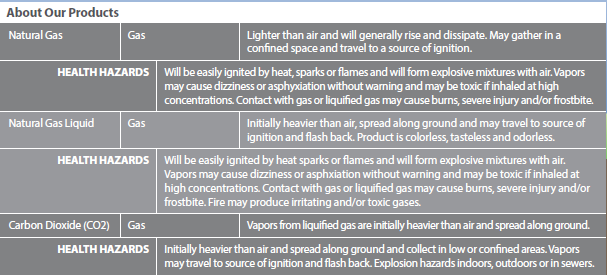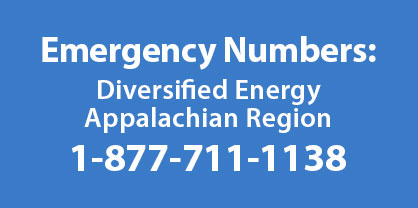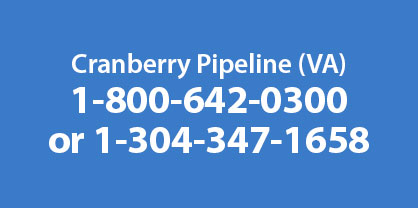Diversified Energy Company responsibly produces, transports and markets primarily natural gas and natural gas liquids from existing assets in the U.S. Appalachian and Central regions.
Purpose and Reliability of Pipelines and Facilities
Pipelines are the most reliable and efficient way to transport energy resources.
There are over 2.6 million miles of transmission, gathering, and distribution pipelines in the United States that transport a variety of petroleum and natural gas products. Pipelines and facilities provide support for two-thirds of the energy we use each year. The U.S. Department of Transportation states that pipelines are the safest mode of transportation for natural gas and petroleum products.
- Transport safe and clean energy
- Efficient and reliable transportation
- Safe storage of products
Damage Prevention
Anyone who is planning a project that involves digging
should always call 811 before they dig.
- State One Call (811) Requirements
- Damage Reporting
- Call 811 before digging
- Steps to calling 811
Click on your State for 811 Information in Your Area

Pipeline Overview
Diversified Energy is an independent energy company engaged in the production, marketing, transportation and retirement of primarily natural gas related to it U.S. onshore, upstream and midstream assets.
Emergency Preparedness
Diversified Energy regularly collaborates with emergency responders to prepare for the unlikely event of an incident or leak.
Preparedness Efforts
Pipeline companies regularly communicate, train, and plan with emergency responders and in the event of a incident or leak, they will dispatch trained personnel to assist emergency responders. Responders are trained to protect life, property and facilities. Pipeline personnel will take steps to minimize the amount of product leaking and isolate the emergency area.
Pipeline Location
Pipeline markers are located in the pipeline right-of-way and indicate the approximate location, but not the depth of a buried pipeline and contains the Diversified name and contact information
National Pipeline Mapping System (NPMS) is a website where you can find who is operating regulated transmission pipelines in your area. NOTE: It does not contain distribution pipeline information.


Example of Diversified Pipeline Markers
Leak Recognition and Response
Using your sense of sight, sound, and smell will help you recognize a suspected leak.
- Sight - bubbles in wet areas, dead vegetation, blowing dust or flames.
- Sound - hissing or roaring sound
- Smell - sulfur or rotten egg smell
Natural gas is intentionally odorized so that the average person can smell it easily. Natural gas is flammable and can be ignited by heat, sparks or flames. If you think you have a leak follow these rules to avoid causing a spark, fire or explosion:
- DON'T flip a light switch or ring a doorbell.
- DON'T light a match or a cigarette.
- DON'T use your phone, tablet, computer or other mobile devices.
- DON'T open or close your windows or garage door.
- DON'T start your vehicle if nearby.

Right-of-Way Encroachment
Rights-of-way (land where buried pipelines and other gas equipment are located) should be kept clear of obstructions to enable employees and contractors to safely operate, patrol, inspect, maintain, and repair the pipelines.
About Our Products







